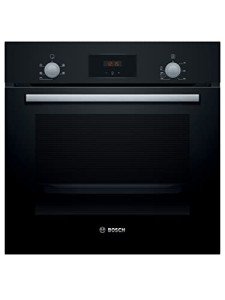This Is How Built In Electric Oven Will Look Like In 10 Years Time
페이지 정보

본문

The Comprehensive Guide to Built-in Electric Ovens and Hobs
In today's fast-paced world, modern kitchen appliances have developed significantly to cater to the tastes and Intergrated ovens needs of modern house owners. Among these appliances, built-in electric Intergrated Ovens (Https://King-Wifi.Win/) and hobs stand out for their efficiency, design, and functionality. This article explores the functions, benefits, setup tips, and upkeep of built-in electric ovens and hobs, alongside dealing with frequently asked questions.

Comprehending Built-in Electric Ovens
What Is a Built-in Electric Oven?
A built-in electric oven is an appliance created to be installed into a wall or kitchen cabinets, providing a seamless, integrated ovens and hobs appearance in the kitchen. Unlike freestanding ovens, built-in models save space and often come equipped with extra functions such as self-cleaning cycles, convection cooking, and different cooking modes.
Types of Built-in Electric Ovens
- Single fitted ovens: Ideal for smaller sized kitchen areas or those who cook for fewer people.
- Double Ovens: Offer more cooking area, suitable for bigger households or those who entertain often.
- Mix ovens integrated: These include both a traditional oven and a microwave, providing flexible cooking options.
Advantages of Built-in Electric Ovens
| Advantage | Description |
|---|---|
| Space-Saving Design | Fits effortlessly into cabinetry, releasing up counter area. |
| Enhanced Aesthetics | Develops a modern-day, professional kitchen appearance. |
| Versatile Cooking Options | Frequently includes multiple cooking modes including bake, broil, and convection. |
| Energy Efficient | Consumes less energy than conventional ovens. |
Understanding Built-in Hobs
What Is a Built-in Hob?
A built-in hob is a cooking surface installed into the kitchen counter top, integrating effortlessly with the kitchen design. Readily available in electric, induction, and gas ranges, electric hobs are renowned for their precision and ease of use.
Kinds Of Built-in Hobs
- Electric Hobs: Traditional coil elements that heat through electrical resistance.
- Induction Hobs: Use magnetic energy to heat only the cookware, making them quicker and safer.
- Ceramic Hobs: Feature a smooth surface area with glowing heat underneath, using easy cleaning.
Benefits of Built-in Hobs
| Advantage | Description |
|---|---|
| Quick Cooking Times | Electric hobs heat quickly, reducing general cooking time. |
| Easy to Clean | Flat surface permits for fast and straightforward cleaning. |
| Durable | Traditionally built to last and stand up to high temperatures. |
| Versatile Compatibility | Works well with various cookware products. |
Installation Considerations
Setting up a Built in ovens electric-in electric oven and hob needs mindful preparation.
Actions for Installation
- Measure the Space: Ensure the measurements of the oven and hob match the assigned area in your kitchen.
- Check Electrical Requirements: Consult an electrician to guarantee circuitry can deal with the home appliance's power needs.
- Placement of Appliances: Position the oven at a practical height, usually between waist and eye level.
- Ventilation: Ensure proper ventilation, especially if your oven integrates a range hood.
Necessary Tools
- Power drill
- Screwdrivers
- Level
- Determining tape
Safety Precautions
- Always detach the power before setup.
- Follow maker directions carefully.
- Consider employing an expert for electrical connections.
Upkeep Tips
Keeping built-in electric ovens and hobs is vital for longevity and performance.
Regular Care Routine
- Cleaning up the Surface: Use a soft fabric and manufacturer-recommended cleaner.
- Inspecting Electrical Connections: Check cables and plug for damages occasionally.
- Cleaning Filters: If the oven has a ventilator, clean or change the filters as needed.
Repairing Common Issues
| Problem | Possible Solution |
|---|---|
| Oven Won't Heat | Inspect the power supply and heating element. |
| Heating Inconsistency | Check the thermostat and oven calibration. |
| Hob Not Heating | Make sure pots and pans works and inspect the power supply. |
Frequently Asked Questions
1. How do I choose the best size built-in electric oven?
Picking the ideal size includes determining your kitchen area and considering how much cooking you typically do. If you entertain regularly or have a large family, select a double oven.
2. Are built-in electric hobs safe to use?
Yes, built-in electric hobs are safe, especially induction hobs which only warm the cookware, lowering the risk of burns.
3. Can I set up a built-in oven and hob myself?
While it is possible for experienced DIY enthusiasts, working with a professional is advised, especially for the electrical connections.
4. How typically should I clean my built-in oven and hob?
Cleaning should be done frequently after use, with deep cleansing periods depending on cooking frequency - usually every few months.
5. Do built-in appliances need unique maintenance?
Built-in appliances need similar maintenance to freestanding models, however correct care needs to be taken with their surrounding kitchen cabinetry.
Built-in electric ovens and hobs present a fusion of innovation and style, providing performance and modern-day looks to any kitchen. With appropriate choice, mindful setup, and regular maintenance, these appliances can improve one's cooking experience for lots of years. Comprehending the features, benefits, and care requirements can empower house owners to develop the kitchen of their dreams-- effectively and stylishly.
As cooking areas continue to develop into central centers of the home, choosing the best built-in options plays a crucial role in day-to-day culinary creativity and pleasure.
- 이전글5 Lessons You Can Learn From Diagnosing ADHD In Adults 25.05.21
- 다음글The History Of Built In Single Electric Oven 25.05.21
댓글목록
등록된 댓글이 없습니다.



